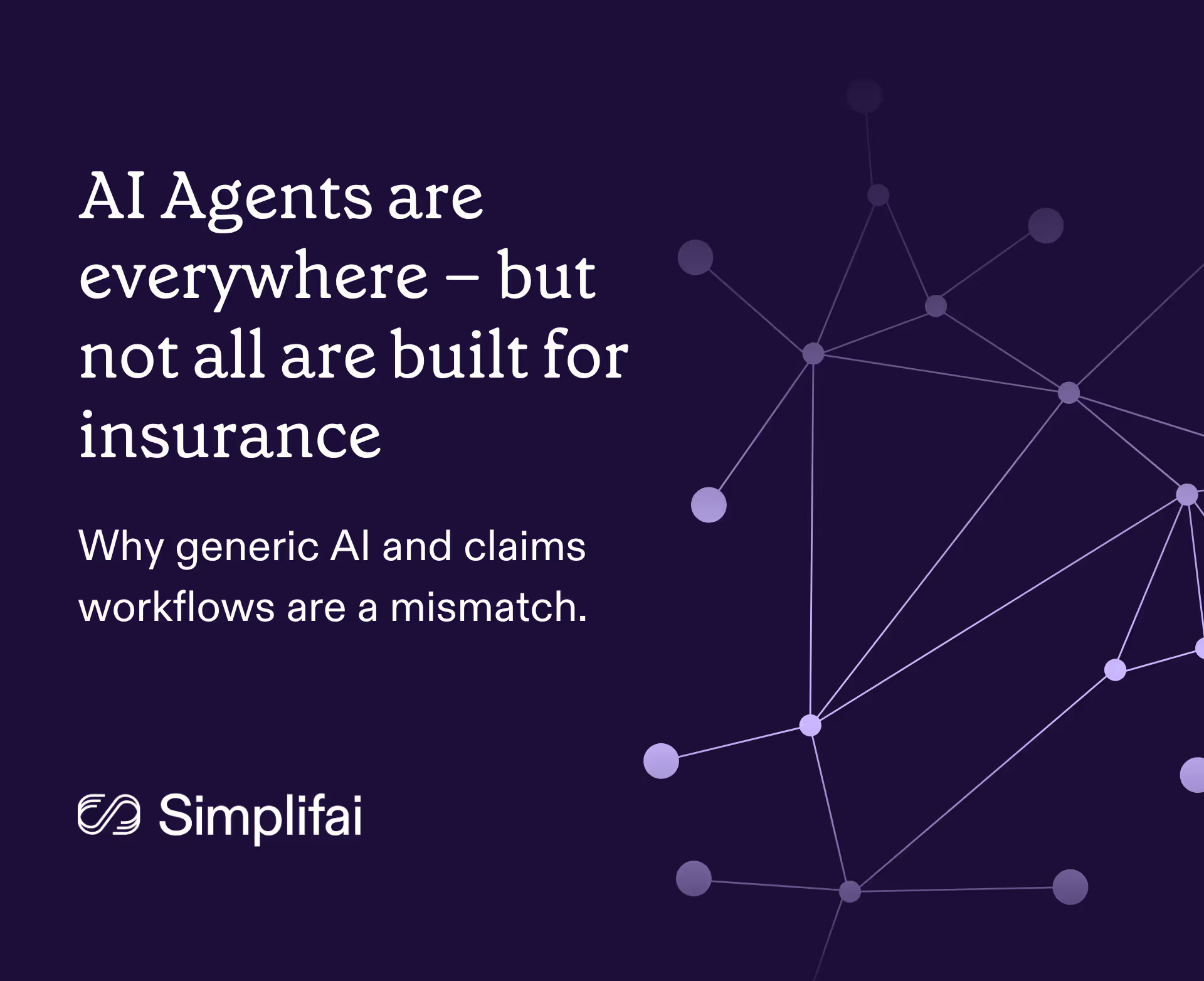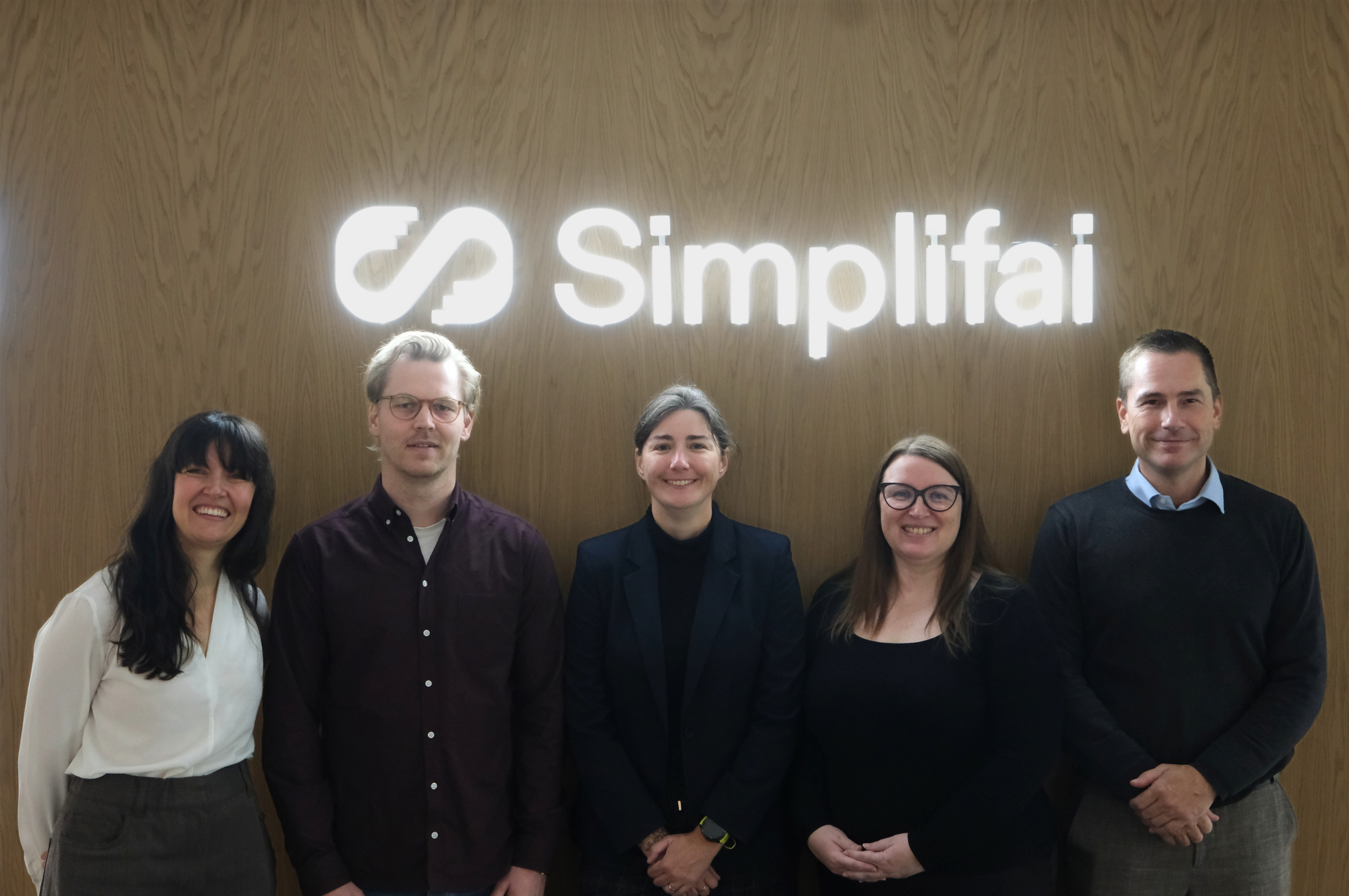A new generation of AI agents: powerful, but not purpose-built OpenAI’s launch of the autonomous ChatGPT agent marks a shift in how general-purpose AI operates. These Agents can now browse, send emails, and execute actions across apps — without constant human input. Impressive? Yes. But even OpenAI CEO Sam Altman has warned users not to rely on it in critical use cases:
"I would explain this to my own family as cutting edge and experimental; a chance to try the future, but not something I’d yet use for high-stakes uses or with a lot of personal information until we have a chance to study and improve it in the wild."
The consequences of using AI that’s not built for insurance In insurance, every decision must be accurate, explainable, and legally sound. Claims involve sensitive personal data, legal judgments, and compensation calculations that must be consistent, auditable, and jurisdiction-aware. Generic AI agents don’t understand jurisdiction, policy wording, or claims workflows. Their ability to act – not just generate – increases the risk of automation errors. The result? AI may expose your organization to liability, data breaches, or regulatory violations you didn’t see coming.
1. Compliance blind spots Generic AI models don’t know local laws or company-specific processes. They can hallucinate rulings, misinterpret guidelines, or overlook key terms buried in your policy documents. In regulated markets like insurance, this poses a compliance risk for both businesses and individuals.
If you’re using AI to assess claims, automate decisions, or influence outcomes, there’s a good chance you’re operating a high-risk system under the upcoming EU AI Act . Set to take effect on August 2, 2026, the Act requires organizations deploying AI in high-risk environments to meet strict obligations, including:
Ensuring the AI complies with jurisdiction-specific laws and regulations Making decisions traceable and subject to human oversight Maintaining transparent logging, documentation, and risk monitoring Failing to meet these standards doesn’t just put your tech stack at risk, it could expose your organization to legal liability, regulatory fines, and reputational damage.
2. Legal liability Generic AI Agents like ChatGPT are not designed to assume responsibility for outputs. If a claim is handled based on incorrect AI output, and a customer or lawyer disputes it – who’s responsible? In most cases, it is the implementer of AI, not the developer.
Legal experts, including HFW , point out that courts increasingly hold the implementers of AI responsible, especially when harm is foreseeable and oversight is lacking. With the proposed AI Liability Directive , claimants may no longer need to prove fault – only that the AI system was used, and the harm occurred. That means insurers must be able to prove they did everything necessary to prevent misuse.
3. Inconsistency Generic AI tools are designed for versatile conversations and creation, not for consistent decision-making. ChatGPT is non-deterministic by design, meaning it may return different responses to the same prompt, even if the inputs seem identical.
In regulated workflows like claims, inconsistency undermines trust and process reliability. If two adjusters ask ChatGPT to summarize the same claim and get different conclusions, it creates confusion – and potentially disputes.
If you're using an Large Language Model (LLM) in insurance, it must be controllable. You need outputs that are stable, explainable, and repeatable. One key factor behind this variability is the temperature setting in LLMs, controlling how deterministic the AI is:
A high temperature (e.g. 0.8–2.0) encourages more varied, creative responses, that work well for writing poems or birthday wishes. A low temperature (e.g. 0–0.2) produces more consistent outputs, and is better suited for decision-making in high-accuracy workflows. 4. Manual patchwork Generic AI doesn’t natively integrate with your claims platforms, core systems, or policy databases. That means workflows often rely on copy/paste, browser extensions, or middleware workarounds. This burns time and introduces new risks such as data security and process integrity – especially in multi-step processes like claims triage, assessment, escalation, and payout.
While tools like ChatGPT Agents promise more automation, they’re still built for general use, not for insurers. Automation requires manual setup, limited API flexibility, and no native understanding of insurance process logic. They can’t adhere to claims logic, interpret policy hierarchies, or enforce escalation clauses. That means more configuration, more supervision – and ultimately, more operational debt.
Worse, this kind of patchwork makes it hard to maintain compliance. If AI outputs are dropped into workflows without traceability or system-level validation, you lose oversight – and that exposes your business to avoidable risk.
Built-for-insurance AI is not just “better fine-tuned” Insurance-specific AI isn’t just general-purpose AI with a few extra prompts. It’s built differently: with focus, control, and domain expertise baked in. It’s designed for high-stakes, high-accuracy workflows where guesswork and inconsistency simply don’t belong.
Tailored to insurance data, language, and logic Purpose-built AI is trained on real claims, policies, rulings, and processes. That means it doesn’t just understand legalese – it understands your business context. From country-specific regulations to company-specific terms and workflows, it’s tuned for the real-world decisions insurers make every day.
Human in the loop – by design Human-in-the-loop (HITL) means the AI doesn’t act alone – a person reviews or approves its outputs when needed. In insurance, this is essential for trust, compliance, and accuracy.
Purpose-built AI lets you decide when and how humans step in:
Set confidence thresholds for review Route exceptions or low-certainty cases Control when automation stops and expert judgment takes over HITL also plays a key role in improving the AI Agent over time. When humans step in to correct mistakes or override suggestions, those inputs can be used to retrain or fine-tune the model, making it more aligned with your workflows, policies, and decision logic.
Live, trusted, verifiable data sources Generic models pull from static or web-based training data. Insurance-grade AI connects to reliable, up-to-date, and traceable sources: legislation, case law, customer files, internal policies, and structured claims data.
Purpose-built AI is trained on your organization’s own data, documents, and workflows. From policy language and email templates to decision logic and process rules, the AI Agent speaks your language. It knows how your teams work, what matters to your compliance teams, and what your customers expect.
Explainability isn’t optional In regulated environments like insurance, it’s not enough for AI to give the right answer – you need to know how it got there. Built-for-insurance AI provides a clear, auditable trail behind every output: what data was used, how the decision was made, and which rules or logic were applied. This kind of traceability is essential for compliance, internal quality assurance, and customer trust. If you can’t trace the decision, you can’t explain it.
Continuous learning, not static snapshots Generic models freeze over time. Adaptive, domain-specific AI continues to evolve – learning from new data, regulatory updates, and critically, human-in-the-loop interventions. When a human steps in to correct or confirm an AI output, that decision becomes high-value feedback. Over time, these human touchpoints help the model refine its logic, ensuring the AI Agent evolves alongside your business.
More than a tool – a partner you can trust AI in insurance isn’t a plug-and-play solution – especially when claims decisions carry legal, financial, and reputational consequences. You need more than a tool. You need a partner you can talk to.
Working with a dedicated AI provider means you can:
Ask questions when the AI behaves unexpectedly Adapt the system to changes in regulations, products, or internal workflows Raise issues and get support from people who understand both the technology and your industry Collaborate on continuous improvement, not just rely on generic updates With generic platforms, you often get an API and a help center. But with purpose-built, insurance-grade AI, you get a real point of contact – someone who knows your context and takes responsibility for performance, explainability, and compliance.
That’s exactly what we offer at Simplifai . Our AI Agents are built specifically for insurance – and backed by people who understand your workflows, regulatory requirements, and customer expectations. In short: a team committed to making AI work in your real-world claims environment.
The difference between smart AI and the right AI Generic AI tools like ChatGPT have their place, but that place isn’t inside regulated claims workflows. In insurance, ‘smart’ isn’t enough. You need AI that understands your rules, adapts to your workflows, and delivers outputs you can explain, trace, and trust. That means working with purpose-built technology and real partners – not just tools.
But even ‘insurance-specific’ AI isn’t always enough. The most effective approach is deploying AI Agents tailored to each line of business – whether it’s motor, travel, property, or bodily injury. Each domain comes with its own data types, regulatory sensitivities, decision logic, and customer expectations. An Agent trained for motor claims understands repair thresholds, policy nuances, and escalation triggers. One designed for bodily injury claims can interpret medical terminology and legal standards.
This level of specialization ensures your AI supports real decisions, in real workflows, with real accountability.
Ready to move beyond generic AI? Contact us.





